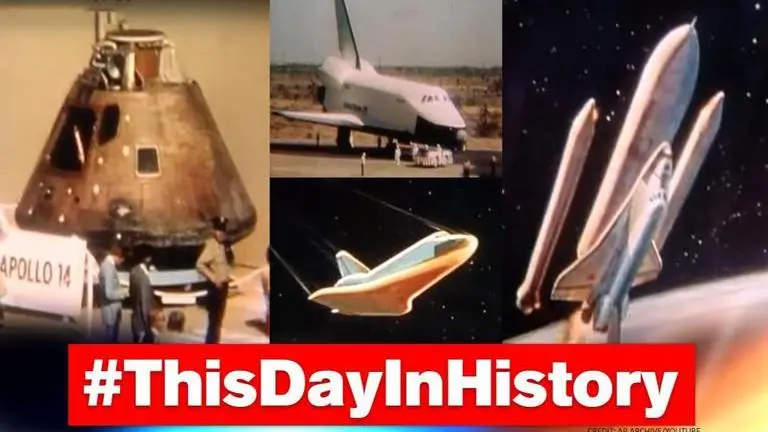Updated 18 September 2020 at 19:29 IST
NASA unveiled its first Space Shuttle ‘Enterprise' on this day in 1976; Read more
Originally, named as Constitution, NASA vehicle attracted thousands of spectators at the launch, including the original Star Trek television series cast.
- Science News
- 3 min read

On this day in history, Sept. 17, 1976, NASA launched its first-ever prototype space shuttle Enterprise at the facility in Southern California, US. The test vehicle marked the beginning of NASA’s space shuttles era. Originally, named as Constitution, the vehicle attracted thousands of spectators at the launch, including the original Star Trek television series cast as the shuttle was named after a starship commanded by the fictional Captain James Tiberius Kirk.
“Enterprise, the first Space Shuttle Orbiter, was originally to be named Constitution (in honor of the U.S. Constitution's Bicentennial). However, viewers of the popular TV Science Fiction show Star Trek started a write-in campaign urging the White House to select the name Enterprise,” NASA wrote in a press release.
Further, it informed that the space agency conducted a nine-month ALT program at its Dryden Flight Research Facility to demonstrate that the first-ever shuttle was capable of a flight like an airplane and could fly into the Earth’s atmosphere. Later, NASA astronauts Fred Haise, Gordon Fullerton, and Joe Engle and Dick Truly flew the 50,000-pound spacecraft as the Enterprise was recognized capable of carrying structural loads and responses.
[NASA's space shuttle Enterprise rolled out of the Palmdale manufacturing facilities and was greeted by NASA officials and cast members from the Star Trek television series. From left to right. Credit: © NASA]
“Five captive flights of the Enterprise mounted atop the SCA with the Enterprise unmanned and Enterprise's systems inert were conducted in 1977 to assess the structural integrity and performance handling qualities of the mated craft,” NASA revealed in the release.
According to NASA, the astronauts even managed to separate the spacecraft from the SCA in a historic landing at the t Edwards Air Force Base on a dry lake bed, as never previously witnessed. Enterprise’s last two flights were made without the tail cone, NASA said, adding, that the flight adopted the configured orbiter's pilot-guided approach and landing capability. “On March 13, 1978, the Enterprise was ferried atop the SCA to NASA's Marshall Space Flight Center, where it was mated with the external tank and solid rocket boosters and subjected to a series of vertical ground vibration tests,” NASA informed.
Advertisement
Advertisement
[A view of the NASA Orbiter OV-101 Enterprise on the launch tower as it would appear prior to launch. Image credit: Air Force/TSGT James Pearson/ NASA]
[The space shuttle prototype Enterprise flies free after being released from NASA's 747 Shuttle Carrier Aircraft over Rogers Dry Lakebed during the second of five free flights carried out at the Dryden Flight Research Center. Credit: © NASA]
[NASA handed Enterprise over to the Smithsonian Institution's National Air and Space Museum near Washington, D.C. Credit: NASA]
Retired to Intrepid Sea, Air and Space Museum
After this, Enterprise was ferried to the Kennedy Space Center. In its course, Enterprise went on a 28-day European goodwill tour as it was loaded on Boeing 747 Shuttle Carrier Aircraft. Enterprise flew across the Goose Bay, Labrador in Newfoundland Canada, and on to Keflavik Naval Air Station in Iceland. On September 20, 1985, Enterprise which was parked at Dryden Flight Research Facility to the Kennedy Space Center in Florida was handed to the Smithsonian Institution's National Air and Space Museum in Washington DC. The Smithsonian’s National Air and Space Museum transferred Enterprise to the Intrepid Sea, Air & Space Museum in 2012. Discovery is currently on display at the our Steven F. Udvar-Hazy Center in Chantilly, Virginia .
Published By : Zaini Majeed
Published On: 17 September 2020 at 18:22 IST




